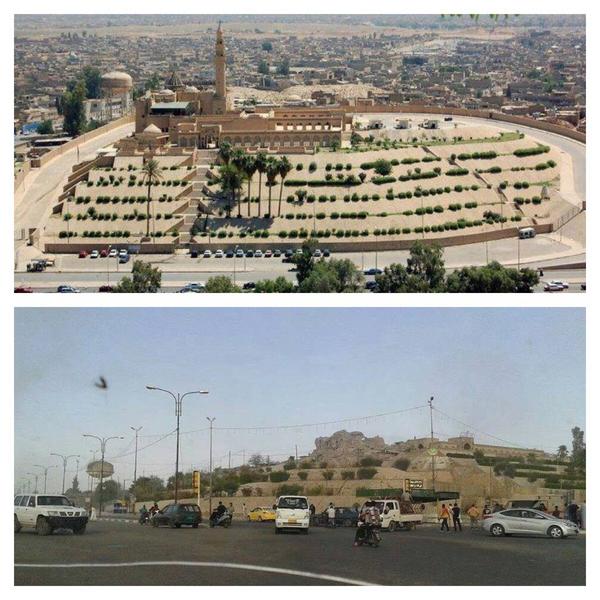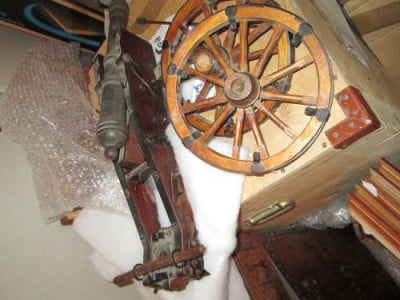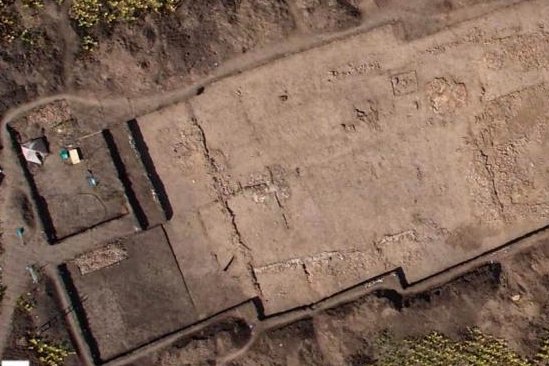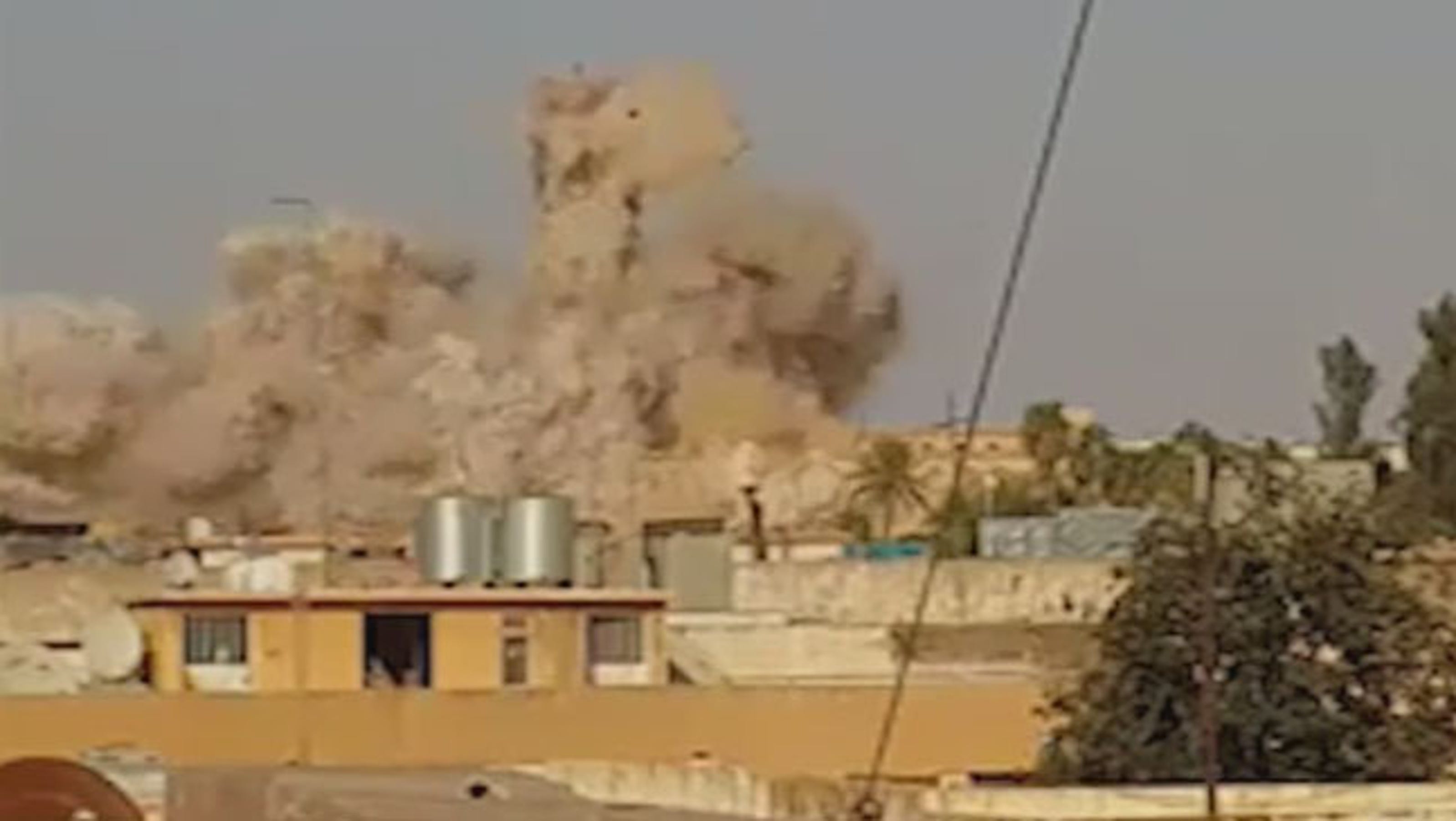Cultural Property and Heritage
Open discussion about developments in cultural property, heritage, and repatriation.
Monday, April 4, 2016
Friday, February 6, 2015
Elgin's Legacy? :The Archaeology News Network: Earls of Elgin: Serial looters of Athens and Beijing
The Archaeology News Network: Earls of Elgin: Serial looters of Athens and Beijing
Interesting article on how the disregard for other cultures contributes to looting.
I hope to get a new post up soon!
Interesting article on how the disregard for other cultures contributes to looting.
I hope to get a new post up soon!
Monday, February 2, 2015
Encuesta! ¿Cuál es su película favorita de Indiana Jones?
Create your free online surveys with SurveyMonkey , the world's leading questionnaire tool.
Monuments Men Series Part V: Can We Have Monuments Men today?
Last Wednesday The Art Newspaper published an article entitled "Wanted a New Generation of Monuments Men for US Army" (Stoilas 2015), writing about the need for a new generation of Monuments Men to help protect cultural sites in times of conflict. One of the concerns is that in the past, the US Army has reacted to looting of sites like the National Museum in Iraq in 2003.
In my last post regarding the looting of the Museum of the History of Kiev on February 18, 2014, I questioned why the collection was not protected. It should not come as any surprise that cultural heritage is a target during armed conflict either as an attempt to sell objects on the market or to destroy and demoralize a group of people.
According to the article, the army is not surprised by the destruction of heritage, especially given the recent events in Iraq and Syria regarding ISIS (a new post regarding ISIS should be published soon), and are looking to recruit archaeologists, museum directors, preservationists, to help advise soldiers, but how likely is it that people with these skills will voluntarily sign-up?
The article makes a good point in comparing the US armed forces of today to the US armed forces of WWII when the original Monuments Men were active. During WWII the US had a mandatory draft, but now that joining our armed forces is voluntary, less than 1% of the population is enlisted. Based on this difference, there is a small chance that this 1% would have the skills of a museum director who has spent years in school obtaining an advanced degree such as a Ph.D.
Referring to an interview with Brigadier General Hugh Van Roosen, the director of the Institute for Military Support to Governance (IMSG) at Fort Bragg, North Carolina, Stoilas writes:
IMSG now wants civilian experts in fields ranging from agriculture to telecommunications, and including cultural heritage preservation, to fill a new officer designation in the US Army Reserve, known as a “38G”. More than 500 existing civil affairs positions are due to be reassigned as these specialists from 1 October. The IMSG will first look within the military to fill these posts, but expects “the bulk of these people to come as direct commissions”, Van Roosen says—meaning civilian experts who would join the Army Reserve as officers.
“We are looking at individuals who would advise and assist at the national or multi-national level,” Van Roosen says, adding that this would probably be someone with a doctorate and ten years of experience who is widely respected within their field of expertise, “at least” on the level of a museum director. “We’ll take individuals and add additional training to ensure they can operate effectively in that international environment.” This will include psychological testing, “to ensure people are a good fit for the mission”, Van Roosen says. “We really need to make sure we have the right people who are plugging in at the ministerial level in a country.” (Stoilas 2015)
So I wonder, is it really possible in this day-and-age to find experts willing to enlist to protect cultural heritage? Sure we always discuss the importance of protecting cultural heritage and property, but are we willing to put ourselves in the line of danger to do so? I've always thought it would be a good idea if I could go out and assist (I do not have my Ph.D. though), but I do fear the possible violence I would be subject to. So now I pose this to you, would you be willing to enlist if you had the credentials to protect cultural heritage.
P.S. This new-age of Monument Men wouldn't have been able to prevent the looting in Kiev since it is not an active US military zone.
Citations
Stoilas, Helen. "Wanted a New Generation of Monuments Men for US Army." The Art Newspaper. January 28, 2015. Accessed January 29, 2015. http://www.theartnewspaper.com/articles/Wanted-a-new-generation-of-Monuments-Men-for-US-army/36935.Sunday, February 1, 2015
Friday, January 30, 2015
Ukraine's Cultural Heritage falling victim
In the past year, amongst the tension between Russia and Ukraine, Ukraine's cultural heritage has been looted and trafficked throughout Europe.
I recently came across a good article highlighting a this issue published by The Centre for Research on Globalization entitled "Ukraine is Plundering its Own Museums On the Way to Europe" dated January 20, 2015 (http://www.globalresearch.ca/ukraine-is-plundering-its-own-museums-on-the-way-to-europe/5428030#sthash.SqjuCUF2.dpufq).
The article describes the looting of the Museum of the History of Kiev on February 18, 2014, when looters stormed the museum and destroyed objects while stealing others. Some of the stolen objects include:
- Knife with a blade of Damascus Steel and a Mammoth tusk handle
- An icon of The Virgin and Child
- A copy of the Gospels
Is it even possible to avoid the destruction of cultural property during a conflict? My posts throughout the last few years focus a lot of this issue, and it appears that heritage is among the first victims. The destruction of heritage affects the morale of the community, and future generations to come, of course this is probably the exact reason why culture falls victim to violence.
What are your thoughts on whether we could prevent this? This is something we should come to expect, and perhaps safeguard against.
As always, thoughts are greatly appreciated!
Best,
Jennifer (Ms. Indy Jones)
Monday, January 26, 2015
Indiana Jones Survey: What is your favorite Movie? Please Take!
I thought it would be nice to find out what your favorite Indy movie is, since you all know mine from the last post! Please take part, and feel free to leave comments (PG-please)
Friday, January 23, 2015
Indiana Jones: What has our favorite Archaeologist done for Archaeology?!
Raiders of the Lost Ark (1981) - Original Trailer/Teaser HD
First, I apologize for the gap in posts. Now on with the post.
I wanted to be a little light-hearted with this post since many current ethical and cultural property issues are sad to report (Crisis in Iraq/Syria destroying some of the oldest sites in the world). In this post I would like to talk about my (and I am guessing many others) favorite fictional archaeologist, Indiana Jones. I am one of those people who watched the Indiana Jones movies over and over as a child (and as an adult). My favorite is Raiders of the Lost Ark (the first movie for those who happen to have never heard of the movies; see the original trailer above). I love the first movie for a number of reasons:
- Harrison Ford is awesome after Star Wars
- Introduced many to the word Archaeology
- Made history look cool (which I believe it is)
- Shows many historic sites (Tanis, etc.)
- And it is a classic
Some facts:
The Nazis were actually very much into archaeology and the occult. Heinrich Himmler, one of the leading Nazis, and architect of Holocaust, was obsessed with finding artifacts of Aryan heritage. He did this in order to promote the Nazi national identity that Germans come from a strong ancient race of Aryans, and to promote the superiority of the Germans. "Hitler and The Occult" on NatGeo is an interesting show to watch if you are interested (http://channel.nationalgeographic.com/channel/episodes/hitler-and-the-occult/).
Okay, another fact, some archaeologists actually do face some dangers. Take in consideration some of the places where archaeologists dig:
- Egypt
- Syria
- Iraq
- Afghanistan
- El Salvador
- Ukraine
- Guatemala
- Honduras
- Libya
Speaking about research, archaeologists spend a lot of time conducting research and teaching undergrads and graduate students (I've spent 7 years sitting through lectures in obtaining my MA). I can remember my professors dreaming about the field, but having to write proposals for grants, and writing their findings, and worst of all reading papers (thank you to my thesis advisors for reading all my papers!). If you watch the clip above, Professor Jones has trouble spelling "Neolithic", this actually has a lot of truth to is. Writing on a board and spelling while teaching is difficult, even if you do have a PhD!
Fictions:
There is plenty of fiction to Indiana Jones, of course it is technically a Science- Fiction movie! I will only discuss some of the aspects of Indy that harm the view of archaeology, especially with concerns of ethics and archaeology.
Indiana Jones never really digs. He just goes into greatly preserved temples, crashes through things and gets the treasure he was looking for. The closest he comes to conducting a dig is in the first movie when he is in the city of Tanis using the artifacts that have no basis in history. This is difficult for archaeologists to swallow because it perpetuates the idea that archaeologists are nothing more than tomb raiders and looters, and in a way justifies looting. I do not need to go into why this is a bad thing, I have plenty of posts on this topic.
Aliens did not create the temples in Mesoamerica (thank you unnamed movie), and those skulls were proven to be modern forgeries before that bad movie came out.
Also, a whip is not a standard archaeology tool.
It Belongs in a Museum
In Indiana Jones and the Last Crusade, another high-ranking Indy film, Dr. Jones famously states "That belongs in a Museum" in reference to the Cross of Coronado, which does not exist. The question is, does it belong in a museum. Why dig up something to put it in a museum, why not repatriate it, or with other artifacts, why dig up a tomb for treasure? I am assuming if someone was buried with something, it is meant to stay with that person's body.
Anyway, many aspects of the debate on cultural property and heritage deals with that very quote "That belongs in a museum", and many of my posts and aspects of my thesis discuss this. I would love to teach a whole class on the ethics of archaeology though the lens of Indiana Jones himself.
So this concludes my post on Indiana Jones, but does it really answer what he has brought to the field? I saw he makes archaeology look cool, what about your thoughts?
Monday, October 27, 2014
Sunday, October 26, 2014
Saturday, August 9, 2014
Wednesday, July 30, 2014
Images of the Shrine of Jonah: Destruction of Culture By ISIS
| Shrine of Jonah; Ninevah |
 | |
| Before (above) and After (below) photos of the Shrine of Jonah |
On July 24, 2014, the Islamic militant extremist group raking havoc in Iraq, destroyed the Shrine of the Biblical Jonah. The shrine paid homage to the Old Testament prophet Jonah and his 3 days spent in a whale.
This is not the only cultural site destroyed by ISIS
 |
 |
| Photo from Hyperallergic (above) and Newsweek (below) |
Tuesday, July 1, 2014
Subscribe to:
Posts (Atom)
















